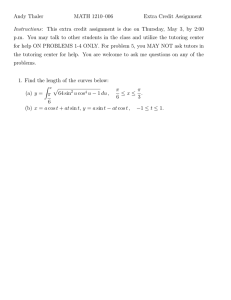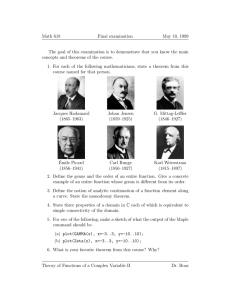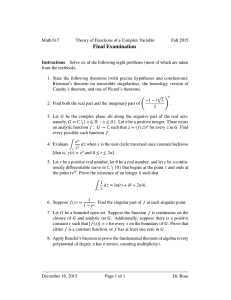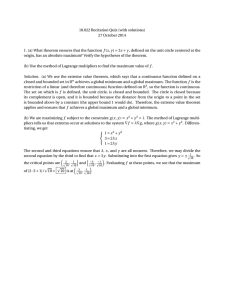Midterm Examination
advertisement
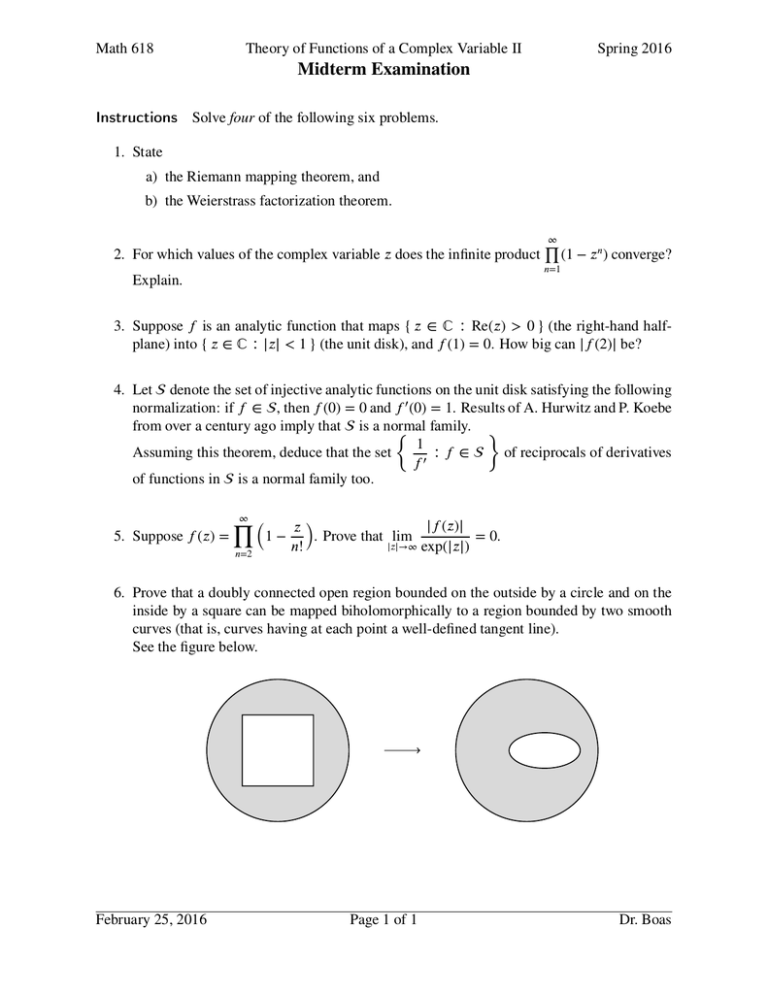
Math 618
Theory of Functions of a Complex Variable II
Spring 2016
Midterm Examination
Instructions
Solve four of the following six problems.
1. State
a) the Riemann mapping theorem, and
b) the Weierstrass factorization theorem.
2. For which values of the complex variable 𝑧 does the infinite product
∞
∏
(1 − 𝑧𝑛 ) converge?
𝑛=1
Explain.
3. Suppose 𝑓 is an analytic function that maps { 𝑧 ∈ ℂ ∶ Re(𝑧) > 0 } (the right-hand halfplane) into { 𝑧 ∈ ℂ ∶ |𝑧| < 1 } (the unit disk), and 𝑓 (1) = 0. How big can |𝑓 (2)| be?
4. Let denote the set of injective analytic functions on the unit disk satisfying the following
normalization: if 𝑓 ∈ , then 𝑓 (0) = 0 and 𝑓 ′ (0) = 1. Results of A. Hurwitz and P. Koebe
from over a century ago imply that is a normal
{ family. }
1
∶ 𝑓 ∈ of reciprocals of derivatives
Assuming this theorem, deduce that the set
𝑓′
of functions in is a normal family too.
5. Suppose 𝑓 (𝑧) =
∞ (
∏
𝑛=2
1−
)
|𝑓 (𝑧)|
𝑧
. Prove that lim
= 0.
|𝑧|→∞ exp(|𝑧|)
𝑛!
6. Prove that a doubly connected open region bounded on the outside by a circle and on the
inside by a square can be mapped biholomorphically to a region bounded by two smooth
curves (that is, curves having at each point a well-defined tangent line).
See the figure below.
February 25, 2016
Page 1 of 1
Dr. Boas




